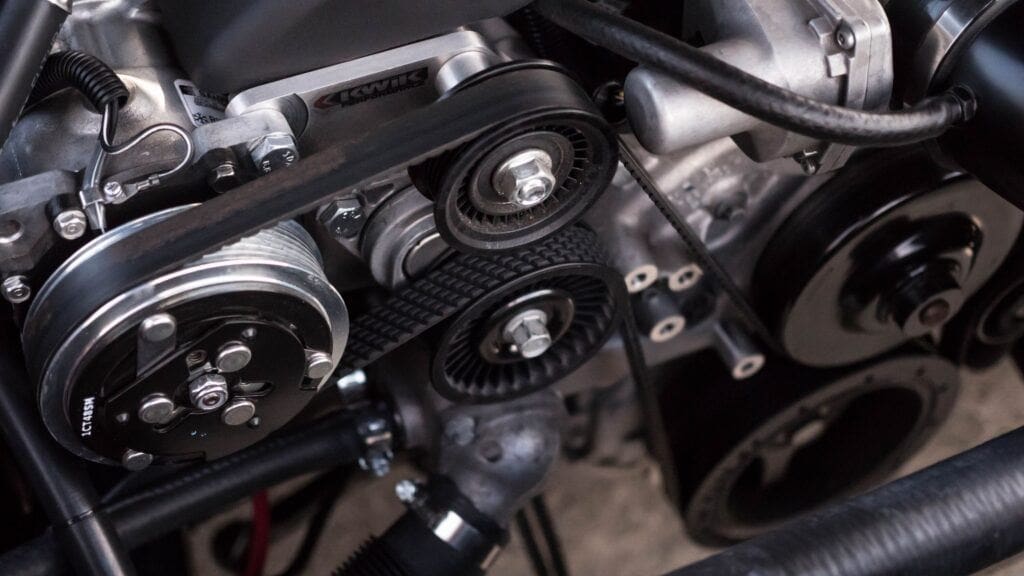The timing belt is an important part of your car, even though many road users have no idea what it is and what it does. Read our helpful guide and become an expert in all things timing belts.
What is a Timing Belt, and what does it do?
The timing belt is a reinforced rubber belt with teeth on one side. It connects the engine’s crankshaft and camshaft, ensuring the valves open and close perfectly with the pistons. In layman’s terms, The timing belt ensures that everything works together and none of the important engine’s parts hit off each other.
What’s the difference between a Timing Belt and Timing Chain?
There isn’t a great deal of difference; timing belts and timing chains do the exact same job but are made from different materials. As mentioned, timing belts are made from rubber with reinforced nylon or fibreglass, while timing chains are made of metal links.
Timing belts are also usually found more in modern cars, while chains are found more in older cars and sporty cars.
What’s the difference between a Timing Belt and Cam Belt?
Nothing. Timing belts and cam belts are the same part in a car. The word ‘timing’ comes from the belt keeping all the engine’s pistons in the correct timing order, while ‘cam’ comes from connecting the engine’s crankshaft and camshaft.
The terms are interchangeable, and it depends on where you are. Timing belt is the majority term in Ireland, though in England, cam belt is used more often.
How Long Does a Timing Belt Last?
There is no hard and fast rule that a timing belt needs to be replaced or will break after a certain number of kilometres, so don’t fall for a mechanic saying as much when you’re having a car serviced.
A rough rule of thumb is anywhere around 100,000 to 160,000 kilometres. It also depends on the make and model of the car. You can just get lucky, and it can last much longer, but make sure to check the car’s logbook to see when the timing belt was last replaced to get a better idea, especially if you’ve bought second-hand.
Signs The Timing Belt Needs to be Replaced
So, what should someone look out for that could be a sign that the belt has trouble? Look out for the likes of:
- High-pitched noise: If you notice a piercing sound coming from the engine, it could be the timing belt.
- Engine misfires: A failing timing belt can cause the engine to misfire.
- Oil leaks near the timing belt: Oil leaks around the timing belt can mean the belt is weakening.
- Visible wear and tear: You cannot always see it in different cars but inspect the timing belt and look for any cracks or fraying.
- Engine won’t start: The engine not starting could be a hundred different things, but it could be the timing belt has broken.
Bringing the car to get serviced soon? Read our top tips on getting your car serviced. Also, learn all about AA approved servicing.
How Much is a Timing Belt Change?
It all depends on the make and model of the car, but you are looking at somewhere between €400 to €1000. This should include the price of the parts and the labour involved. Best to phone around and get a couple of prices.
What Happens if the Timing Belt Breaks When Driving?
If the timing belt breaks when driving, it will cause significant damage to the engine. As the timing belt keeps everything in sync, it means the values and pistons collide and cause bends and breaks.
In most cases, the car will be written off as the cost of getting a specialised mechanic to repair the engine will heavily outweigh the car’s value. It may be worth it for more modern cars, but the timing belt shouldn’t be breaking if the kilometres are low.
Has your car’s timing belt broken while driving? AA offers Roadside Assistance. If you are broken down and not a member, call +353 1 649 7460, and we can get someone out to you straight away.










